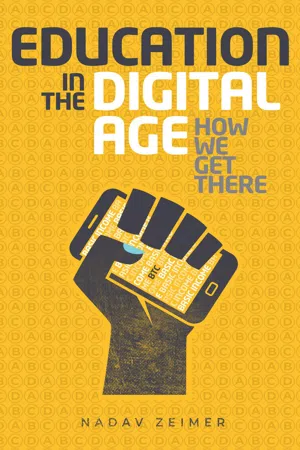
- English
- ePUB (mobile friendly)
- Available on iOS & Android
About this book
What skills are recession-proof? How should you prepare your high school student or an uncertain future?
- Learn why jobs are in decline and what will replace them
- Understand how digital media production will replace some standardized testing
- Gain insight into how digital technology trends such as decentralization and open source could collide to challenge the nation’s largest corporations
- Study the history of economic trends and inquire into whether America is bound for totalitarian corporate rule or a drastic expansion of democratic values
- Explore the research on human bias and discover why anti-bias is crucial for economic growth
- Delve into the limits of artificial intelligence and how a digital native future inverts its role in society
- Question whether surveillance capitalism is something we should worry about
Digital Platforms Are the Most Profitable Companies on the Planet, and Poised to Transform Education …
A former software engineer, Principal Zeimer takes readers through an in-depth evaluation of how digital technology and economics are poised to transform education by examining the concept of academic capital.
A MINDSET SHIFT
FROM: INDUSTRIAL TO: DIGITAL
FROM: Students are consumers of information
TO: Students are producers of academic content (the heart of academic capital)
FROM: More stuff represents prosperity
TO: Human attention (active users) represent prosperity
FROM: Students identify “correct” answer as fast as possible
TO: Students think critically about questions that they design
FROM: Broadcasting
TO: Narrowcasting
FROM: Boss decides what to produce which is pushed to consumers with marketing (“supply side”)
TO: Users decide what to produce and they pull items into existence (“Demand side”)
FROM: It costs money to distribute goods and services leading to economies of scale (monopoly dynamics)
TO: Distribution is free and instant leading to network effects (winner-takes-all dynamics)
FROM: Security means armed guards and guns, stormtroopers
TO: Security means encryption, hackers
FROM: Ownership (owning capital leads to profits / Zero-sum dynamics)
TO: Sharing (Uber has no cars, Airbnb no homes, AliBaba no stores / positive-sum dynamics)
FROM: The corporation / “having a job” / centralized
TO: The Platform / “doing work” / crowdsourced
FROM: Movement of physical atoms of stuff
TO: Movement of electrons
FROM: Groupthink of the executive team
TO: “Mass identities” manipulate “the crowd”
Guaranteed to capture the hearts ofreaders interested in bitcoin, education, or basic income.
Click the BUY NOW button above to get your copy today!
#DNAcredits | A New
Frequently asked questions
- Essential is ideal for learners and professionals who enjoy exploring a wide range of subjects. Access the Essential Library with 800,000+ trusted titles and best-sellers across business, personal growth, and the humanities. Includes unlimited reading time and Standard Read Aloud voice.
- Complete: Perfect for advanced learners and researchers needing full, unrestricted access. Unlock 1.4M+ books across hundreds of subjects, including academic and specialized titles. The Complete Plan also includes advanced features like Premium Read Aloud and Research Assistant.
Please note we cannot support devices running on iOS 13 and Android 7 or earlier. Learn more about using the app.
Information
and Implications of Rapid Change
Table of contents
- Cover
- Dedicated ToOur Teachers
- PART I | SCARCITY AND VALUE: End of the Industrial Age, Birth of the Digital Age, and Implications of Rapid Change
- PART II | THE END OF JOBS: Employment Implications of the Digital Age
- PART III | DIGITAL PLATFORM ECONOMICS: An Economic Organization that Threatens Corporations
- PART IV | DRIVING PROSPERITY: Digital Prosperity—Nuts and Bolts
- PART V | PUTTING IT ALL TOGETHER: Incentives to Rearrange Secondary Schooling